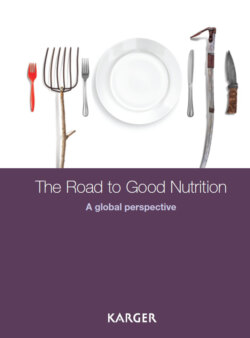Читать книгу The Road to Good Nutrition - Группа авторов - Страница 119
На сайте Литреса книга снята с продажи.
The four dimensions of food security and their determinants
ОглавлениеSource: Adapted from FAO
Food security analysts have also defined two general types of food insecurity: chronic and transitory food insecurity.
These are defined on the basis of their temporality, severity and rate of recurrence.
| CHRONIC FOOD INSECURITY | TRANSITORY FOOD INSECURITY | |
| Is… | long-term or persistent. | short-term and temporary. |
| Occurs when… | people are unable to meet their minimum food requirements over a sustained period of time. | there is a sudden drop in the ability to produce or access enough food to maintain a good nutritional status. |
| Results from… | extended periods of poverty, lack of assets and inadequate access to productive or financial resources. | short-term shocks and fluctuations in food availability and access, including year-to-year variations in domestic food production, food prices and household incomes. |
| Can be overcome with… | typical long-term development measures also used to address poverty, such as education or access to need more direct access to food to enable them to raise their productive capacity. | transitory food insecurity is relatively unpredictable and can productive resources, such as credit. People may also emerge suddenly. This makes planning and programming more difficult and requires different capacities and types of intervention, including early warning capacity and safety net programs (see Box 1). |
Seasonal food insecurity is yet another term. This is used to refer to food insecurity of limited duration linked to cyclical patterns of inadequate availability and access to food. Seasonal food insecurity is usually associated with seasonal fluctuations in climate, cropping patterns, work opportunities (labor demand), income, and patterns of diseases.
